
In 1893, Herbert H. Franklin founded the H.H. Franklin Manufacturing Company in Syracuse, New York, which became the first machine die-casting enterprise in the world. In 1901, together with engineer John Wilkinson, he developed an air-cooled engine. The following year, the Franklin automobile was introduced. Franklin became president of the new Franklin Automobile Company and Wilkinson was named chief engineer. In the new company, Franklin, the primary shareholder, was to run the business side and Wilkinson was to make all manufacturing and engineering decisions.
Wilkinson earned a degree in mechanical engineering from Cornell University in 1889. In college, he was a star athlete in baseball, track, and football. After college he worked for a bicycle manufacturer and became a champion cyclist. By 1898, he was tinkering with gasoline engines and in 1900 he demonstrated his first automobile.
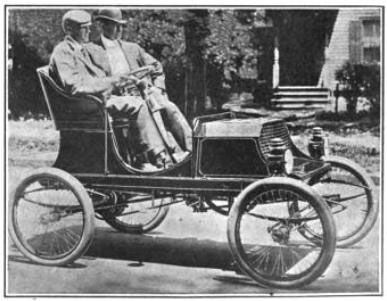
Wilkinson took Herbert Franklin for a ride in his second prototype automobile and Franklin was impressed. Wilkinson’s third prototype would become Franklin’s first production model.
Wilkinson’s basic idea was to produce a car that would be lightweight and economical. He felt that car owners should have as little to do with the mechanics of the car as possible. His initial drawings contained the idea of a self-starter which was to be operated by compressed air.
The first Franklin took two months to build and became the first four-cylinder automobile produced in the United States. The car weighed 900 pounds and could go 12 miles per hour. In the first year of production—1902—Franklin sold a total of 13 cars at $1,100 each.
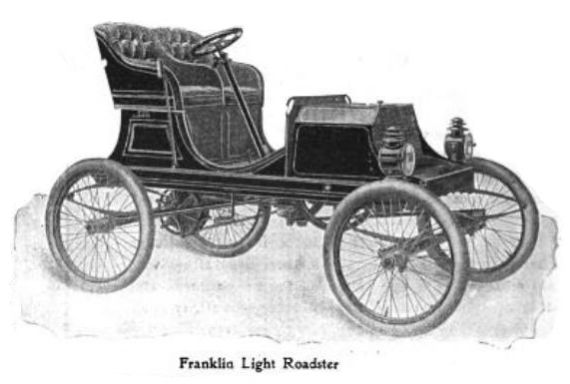
In the Fall of 1902, Franklin brought out its Light Roadster. The 1,000 pound vehicle had two forward speeds, reverse, and two brakes.
As an automotive innovator, Franklin used air-cooled engines which were considered simpler and more reliable than water-cooled engines. They advertised that air cooling did away with radiators, hoses, and water pumps. Air-cooled engines, in the age before antifreeze, had an advantage in cold weather.
Franklin used a wooden frame constructed of three-ply laminated ash and full-elliptic leaf springs. This meant that the vehicle was lighter and was better able to absorb shocks, important in providing a smooth ride over unpaved roads.
Other Franklin innovations included a constant level carburetor which enabled the engine to operate through a great range of speed and throttle. By 1905 Franklin brought out a six-cylinder and an eight-cylinder engine.
By 1904, Franklin was also producing a touring car with a detachable rear tonneau which seated four passengers. The 1,100 pound car was powered by a 10 horsepower engine and sold for $1,300.
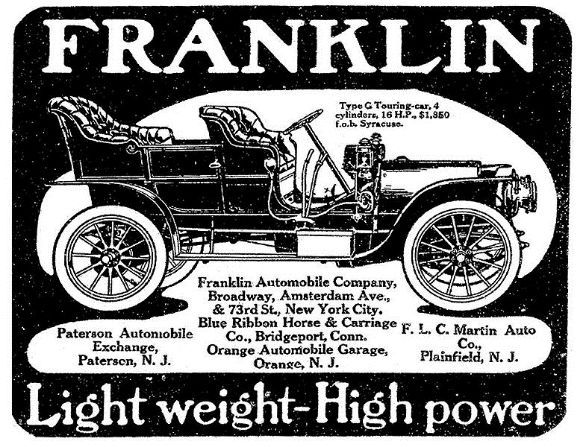
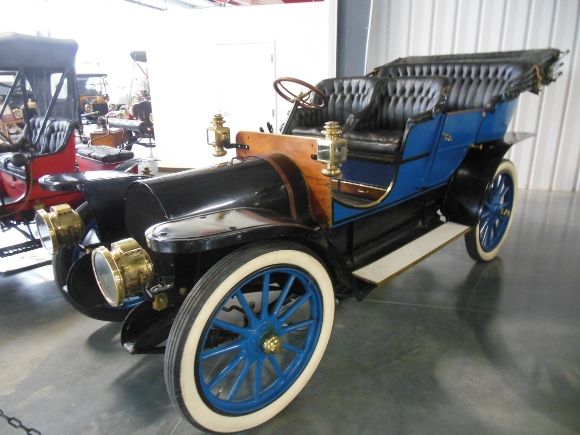
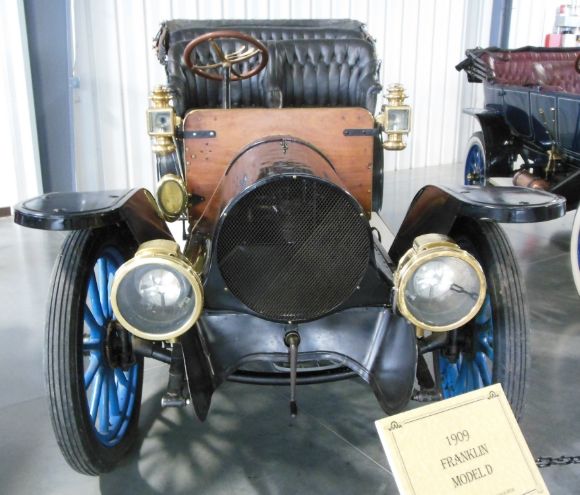
Shown above: 1909 Franklin Model D. This car is on display at the Western Antique Aeroplane and Automobile Museum in Hood River, Oregon.
By 1915, some Franklin models could attain a top speed of 65 miles per hour and obtain gas mileage of 32 miles per gallon.
The Franklin was considered a luxury car, competing with Buick, Hudson, and Jordon. It was less costly than Packard or Cadillac. It had a reputation of being an easy and restful car to drive on long trips.
By the 1920s, Franklin was producing 8,000 cars per year which peaked at 14,000 in 1929.
In 1928, company president H.H. Franklin talked about the value of the Franklin car to the owner:
"Franklin cars have always been economical in the consumption of gas and wear on tires, due to the scientific light weight that has been so carefully designed and built into them. Gasoline mileage alone does not satisfy the motorist, the car owner now desires to know about the cost of upkeep over a period of years, for he has come to realize that upkeep may become the most expensive part about his car.”
In 1930, Franklin introduced a new 100 horsepower engine. In 1932, responding to competition from other luxury cars, Franklin brought out a twelve-cylinder engine. However, the Twelve was the wrong vehicle to build in the Great Depression and only 200 were ever produced. In 1934, Franklin Automobile Company declared bankruptcy.
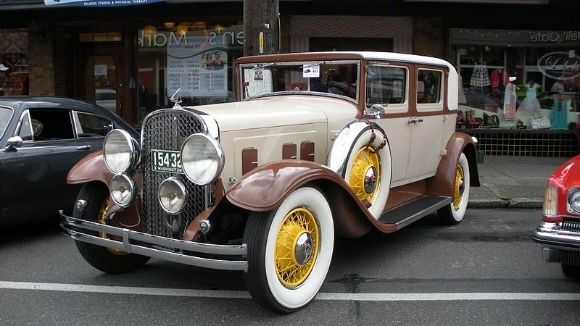
A 1931 Franklin is shown above.


